Please
Note: Firefox and some other search engines are not suitable
– Use “Internet Explorer” for this page to load
perfectly!

Click
the logo above to reach the ssMaritime FrontPage for News Updates
& “Ship of the Month”
With
Reuben Goossens
Maritime
Historian, Cruise‘n’Ship Reviewer, Author &
Lecturer
50-Years
in the Passenger Shipping Industry
Companhia
Colonial De Navegacao, Lisbon
TS
Santa Maria - TS Vera Cruz
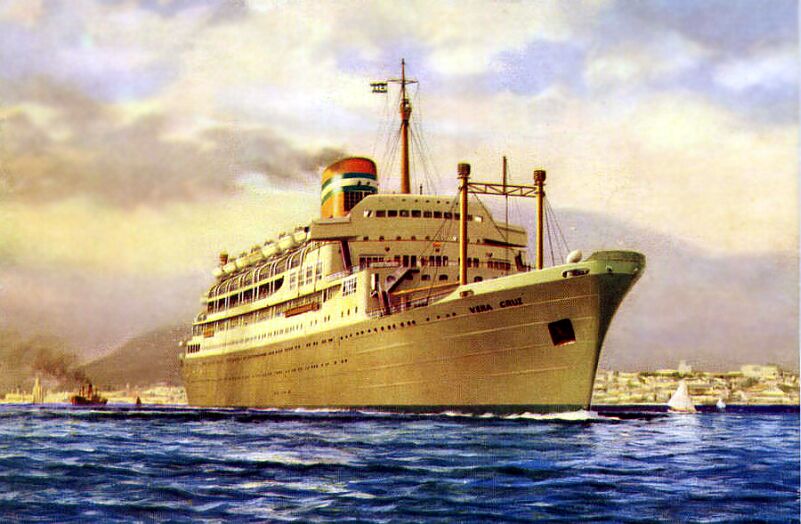
This
is one of two superb original postcards issued by the company of
their two new ships. This is the TN Vera Cruz
Photographs
are either from the author’s private collection or those
that have been provided to the author by ssMaritime supporters,
although the owners are not known. Please read the photo notes at
the bottom of this page.
This Portuguese shipping Company already had
three fine passenger-cargo liners in service, being the 1947
built 13,196 GRT, TN Patria and 1948 built 13,186 GRT, TN Imperio
operating on the Portugal West and East Africa service. Their
third ship was the 1954 built 10,001 GRT, MS UIge operating the Portugal,
West Africa service. However CCN now decided they now required
two larger purpose built passenger liners. These new ships were
going to be much larger than any of the ships before them and
their design would be quite revolutionary considering they would
have what was considered for their day as massive
superstructures, with everything above boat deck being
constructed of light alloys. This saved a great deal of weight
and in due course these ships would prove to be exceptionally
steady at sea!
They would be built in Hoboken Belgium by J.
Cockerill Ship-building Ltd. The first to be commenced was number
748, the Vera Cruz, and she was launched on June 2, 1951. She was
and delivered in February 1952. She commenced on the emigrant
service from Lisbon to Santos, but in 1953 she commenced the Lisbon
to Buenos Aires service.
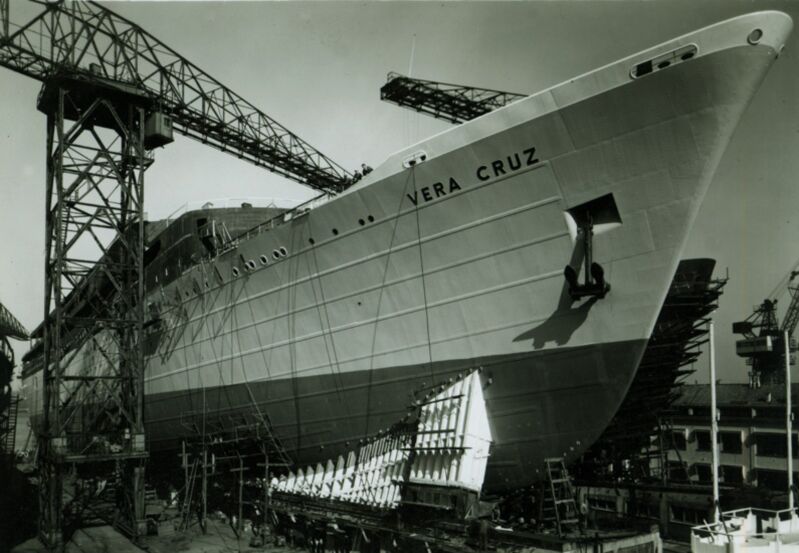
The
very Cruz is seen here in construction at the J. Cockerill
Ship-building Ltd, Hoboken near Antwerp, Belgium
The second of the pair to be built was number
749, the Santa Maria, and she was launched on September 20, 1952,
and completed and delivered in September 1953. She together with
her sister she operated on the Central America migrant service;
But soon she was transferred to the Lisbon to Central America
with an additional call at Port Everglades.
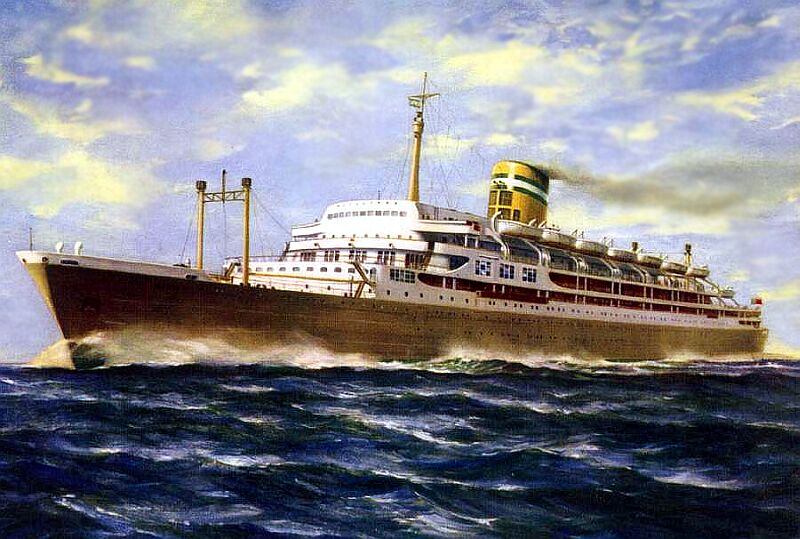
This
is one of two superb original postcards issued by the company of
their two new ships. This is the TN Santa Maria
These two sisters did vary slightly, although
not many ship lovers and observers are aware of this fact,
however one needs to look closely at the forward superstructure
where there is a dramatic difference between the two ships. Vera
Cruz has four sets of lounge windows along the side and then it
wraps around to the front, whereas the Santa Maria has three sets
of windows and is broken by an open deck along the side of the
lounge section, making her looking by far the sleeker and more
modern looking ship of the two!
Their first class accommodations were
particularly luxurious, having a fine range of lounges and
excellent staterooms. A Deck (directly under Boat deck) was
devoted to public rooms, five First Class venues forward and
further Cabin Class aft. First and Cabin Class accommodations
were located on the next two decks. First Class offered four
magnificent deluxe suites, as well as single bedded cabins, twins
and three berth cabins, all having private facilities. Cabin
Class offered Twin and four berth Cabins, some with private
facilities, but most having shared facilities. Some of the cabins
between First and Cabin Class were interchangeable. Each class
had their own swimming pool. In addition to the aforementioned
accommodations; these ships also has a Tourist Class section aft
of the ship offering budget accommodations for migrants as well
as dormitories for troops or special student voyages.
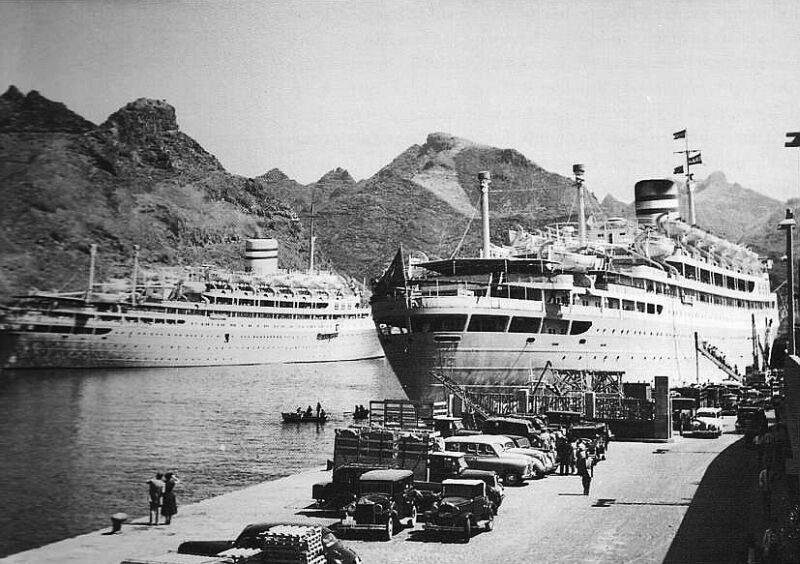
Here
we see the Santa Maria (left) and Vera Cruz (right) at Tenerife
in 1956
****************************
TN
Santa Maria Photo Gallery
THANK YOU! Second Mate, Carlos Russo Belo who
served on the Santa Maria, as well as the Vera Cruz and the
delightful Funchal between the years of 1970 and 1973. I am
very grateful to Carlos for these interior and fine exterior
images! For those who are able to read Portuguese I suggest that
you visit his excellent site on the Portuguese fleet of
ships at http://navios.no.sapo.pt.
Carlos took the first four interior images from
a brochure, which is followed by one photograph taken at a fancy
dress party and an undated “Programme of Events.” Then
there are two fine black and white studies, which were taken by
Carlos from high up on the radar mast atop of the ships Bridge,
whilst standing in the Crows Nest. These two photographs overlook
the ship both forward and aft. Thank you Carlos for your
excellent efforts and your wonderful site that keeps Portuguese
ships alive!
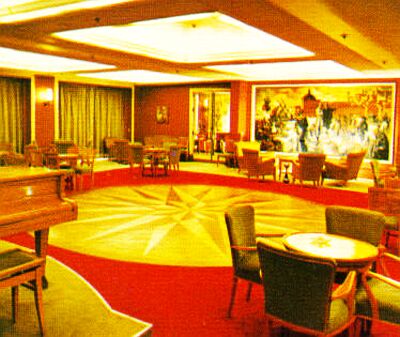
First
Class Main Lounge
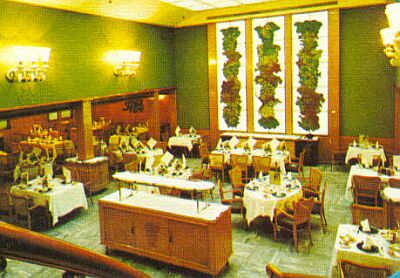
First
Class Dining Room
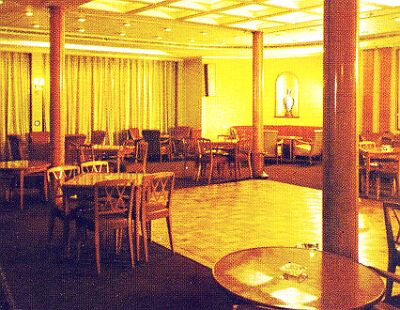
Tourist
Class Lounge and Ballroom
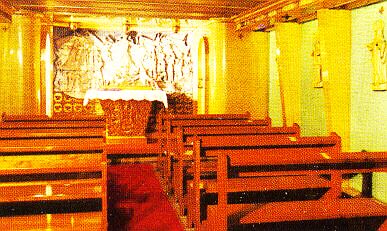
The
ships Chapel
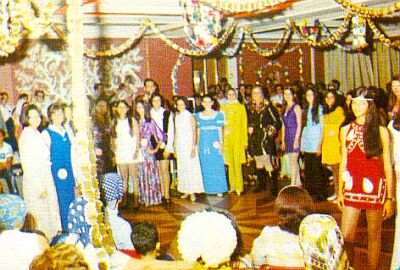
Fancy
Dress in the First Class Lounge
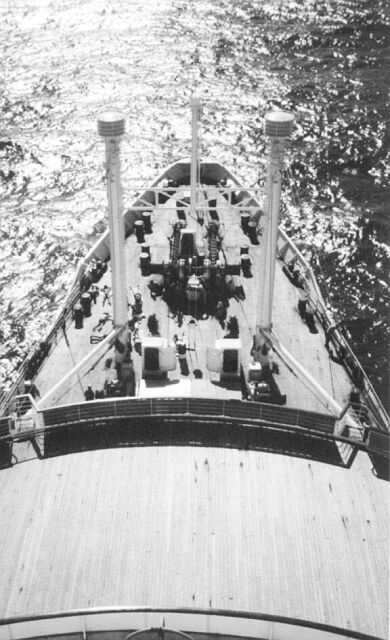
A
fine photograph taken over the bow
Photograph
taken by and © Copyright - Carlos Russo Belo
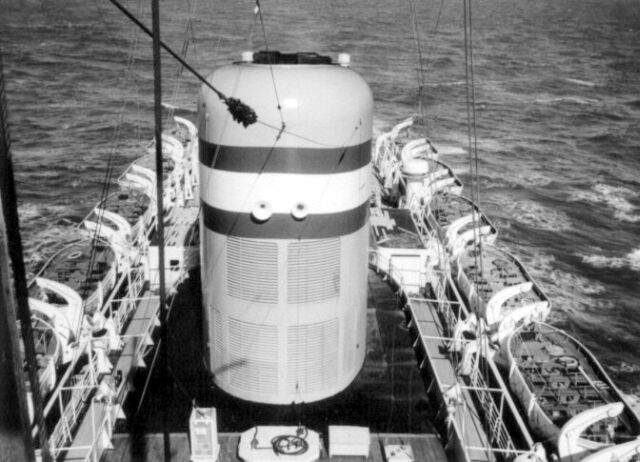
Looking
back over the ship and her stylish funnel
Photograph
taken by and © Copyright - Carlos Russo Belo
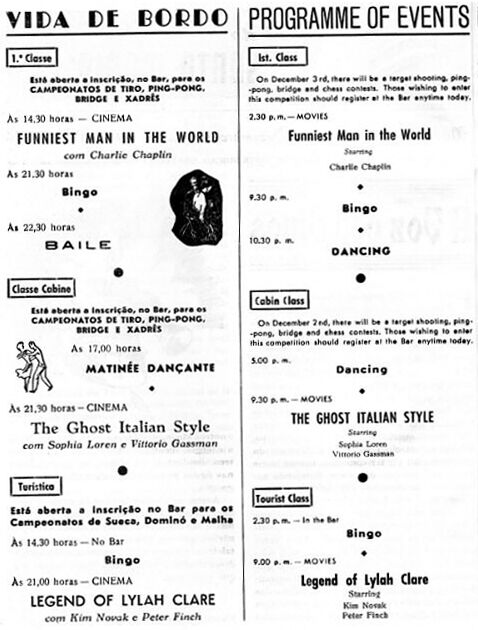
****************************
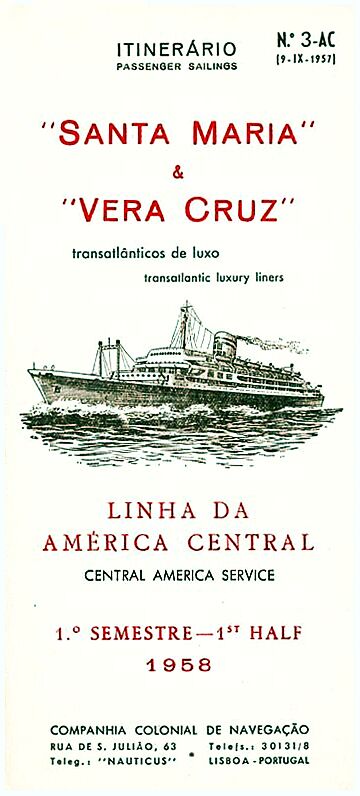 -------------
-------------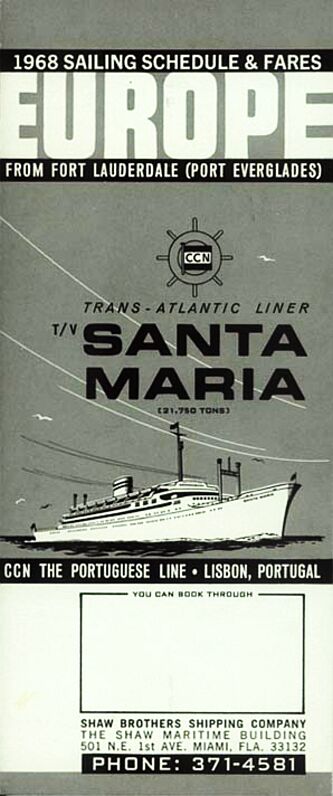
Above
are two Issues of a 1958 Schedule for the Santa Maria & Vera
Cruz
As
well as a 1968 Fare & Sailing Schedule, but only for the Santa
Maria
Schedules
are with thanks to: http://www.timetableimages.com/maritime/index.htm
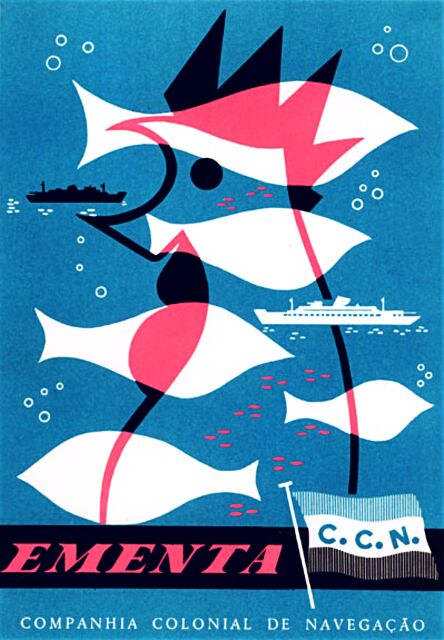
This is a menu from
the Santa Maria from a voyage in 1962
****************************
Specifications:
Builder:
J. Cockerill Ship-building Ltd, Hoboken, Belgium.
Built
for:
Companhia Colonial De Navegacao.
Launched:
Vera Cruz: June 2, 1951.
Santa Maria: September 20, 1952;
Completed:
Vera Cruz: February 1952.
Santa Maria: September 1953.
Tonnage:
Vera Cruz: 21,765 GRT (gross registered tons).
Santa Maria: 20,906 GRT.
Length:
185.9 m / 610 ft.
Width:
23.1 m / 75.8 ft.
Draught:
26.4 ft.
Propulsion:
Parsons Steam Turbines from the builders.
Screws:
Twin.
Service
speed:
20 knots.
Passengers:
1,296 passengers – as built.
First Class: 150 - Second Class: 250 – Third Class –
232.
Tourist class: 664 passengers.
Crew:
319.
Port
of registry:
Lisbon.
Livery:
Grey hull, white superstructure, yellow, green and white bands on
funnels.
Green boot topping.
Holds:
4.
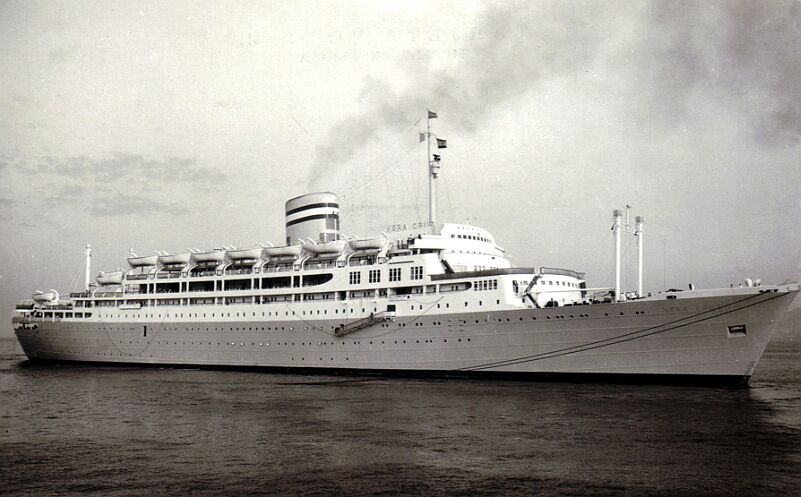
This
is the way we like to remember these two remarkable luxury
Portuguese liners - Vera Cruz looking simply superb!
T.N. Santa Maria.
As many of my readers will well know that it
was the TN Santa Maria what made this pair of Portuguese
passenger liners famous, for it was the Santa Maria that was
hijacked just off the coast of Curacao. At the time the Santa
Maria under the command of Captain Mario Simoes Maia, and her
primary use was for the colonial trade to Angola and Mozambique, Portugal’s
colonies in Africa, and migrant trade to Brazil. Her ports of
call were as follows: Lisbon via Madeira, Tenerife, to La
Guairá. Then via Curacao to Havana (later it would be to San
Juan), and finally Port Everglades and back to Lisbon. The
average trade for this gray-hulled liner was mostly migrants to Venezuela
as well as general passenger traffic, especially the luxury First
and Cabin Class trade.
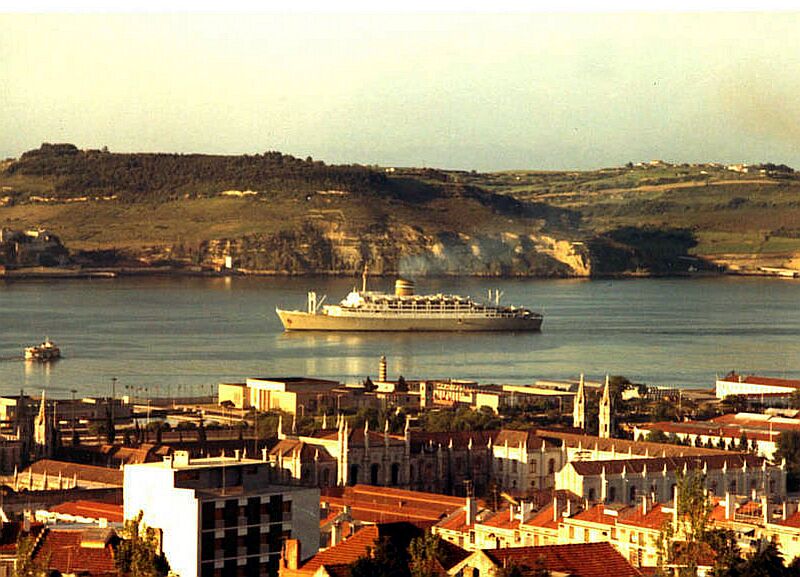
Santa
Maria arrives in Lisbon
But it would be on Monday, January 22, 1961, at
01.30 in the morning when the biggest ever shipboard hijack
occurred as the Santa Maria was taken hostage by a 66 year old
“Captain Henrique Galvao”, who was a passenger on board
and an ex Portuguese military (Navy) officer and political foe of
Portuguese dictator Antonio de Oliveira Salazar and the head of
the “Estado Novo” regime. He had a team of 24 Portuguese
and Spanish rebels who were operating from a base in Venezuela. As
soon as the ship was in the control of the hijackers, it was
announced that the ship had officially been taken over by the
rebels and as the hijack continued, it became more and more
apparent by all onboard that the ship there was a new captain on
board who was in control, but it was certainly not the ships Captain
Mario Simoes!
Later it became obvious that most of captain Galvao’s
conspirators had come aboard in La Guairá Venezuela, bringing
aboard their suitcases all of which had secret compartments that
hid their weapons. The last of the team came aboard in Curacao
either as passengers with their special luggage, or in order to
save money by pretending to be friends and family members of the
captain, being there just to visit and to wave good bye. But when
the Santa Maria departed they had hidden themselves aboard with
his assistance, all part of many months planning. In addition
captain Galvao had arranged for a young lady to work as a
telephone operator on board the ship for this specific job.
During her voyages on the Santa Maria she had memorized all the
ships communications details and systems and noted the stations
taken by the crew during their night watches. She when he and his
party had joined the ship in La Guairá she reported back all her
findings to the captain and his men. But the Galvao and his
rebels waited until the Santa Maria departed Curacao for the
attack and seizure of the ship which was quite violent as the
ships officers resisted fiercely!
Henrique Galvao and his terrorists seized the
ship in the early morning, and ensured that they ceased all
communications. During the fight they killed one officer, being
the 3rd Mate, Mr. Nascimento Costa and wounded several others in
the process of taking complete command over this luxury liner.
The rebels forced crew members, along with Captain Mario Simoes
Maia to take the ship on a new course.
After the seizure of the Santa Maria, that just
took just 10 minutes, Henrique Galvao summoned the passengers and
some of the crew to the First Class lounge where the situation
was explained to them in Portuguese and Spanish, with a few
details added in English. Henrique Galvao concluded this meeting
by playing Tchaikovsky’s 1812 Overture on ships public
address system as a sign of celebration! Although all this seems
rather tame, yet one of the passengers stated that all passengers
at one time were held at gunpoint in the dining room.
At the Caribbean Island of St. Lucia, those who
had been injured during the battle during the seizure of the ship
were place into a lifeboat, which was manned by six sailors and a
nurse. The Santa Maria simply steamed away leaving the lifeboat
and headed into the Atlantic.
Soon enough Henrique Galvao commenced to send
his radio messages being his “official communiqués”
against the Salazar, and Franco Governments in Portugal and Spain
and he did this all in a rather flowery and beautiful Portuguese
language as he was known to be a “poet” and he
addressed it to the: “Democratic newspapers and radio
stations of the free World.” In the meantime the whereabouts
of the ship was unknown, but a massive sea and air search
commenced.
Portugal quickly demanded action against
Captain Henrique Galvao, but for some reason Britain and America
hesitated to act. Internationally the matter was a difficult
situation (WHY?) for Governments to deal with, but, can a hijack
of a passenger liner ever be condoned, no matter the reason? I
believe that both Britain and the USA should be ashamed and
condemned for they should have acted immediately!
A British frigate did see the Santa Maria
somewhere in the Atlantic and kept her in view, but for some
reason they did not report here whereabouts, and then they
“lost sight of her.” U.S. destroyers combed the area
completely but they could find “nothing.” Both of these
could be considered as a crime in maritime law, as they did not
want to get involved and considering that already a life had been
lost and people injured, they had a duty to protect innocent
passengers on this ship!! The Santa Maria remained lost somewhere
on the Atlantic and the evil Henrique Galvao continued to
broadcast from the Santa Maria his so-called official
“communiqués to the free press.”
Then, 10 days later it would be an old Danish
steamer (thank God for the Danes!) that was slowly sailing along
a normal shipping lane, reported that they had just met the
Portuguese Liner, Santa Maria and had “exchanged greetings
with her and Captain Galvao.” Finally the liner had been
found again. Apparently she was off the coast Recife, Brazil and
soon enough a Rear Admiral on board the USS Gearing would be
negotiating with Henrique Galvao out at sea.
As this was a major world news story, news
personnel from around the world had very quickly converged on Recife.
They and their interpreters soon converged upon the USS Gearing
that was still tied up dockside and she was about to set to sail
to meet up with the Santa Maria not far from port now and
negotiate with Henrique Galvao.
Upon arrival USS Gearing stopped a few miles
off shore and some 500 yards starboard from the Santa Maria.
Sailors, marines, the media together with their Brazilian
interpreters at their side continued to watch, wait to see what
was going to happen.
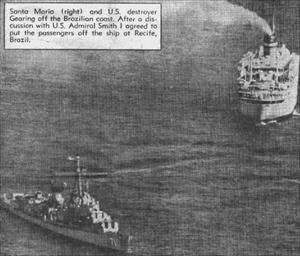
Here we see a
newspaper clipping of the USS Gearing moving around the Santa
Maria during negotiations
However, another interesting event took place
that day, it goes like this: “A fool from the French
magazine “Paris Match,” rented the equivalent of a
Piper Cub after missing the Gearing's departure, and parachuted
into the shark infested waters between both ships with the even
more foolish intent of trying to land on the liner's
forecastle.” Well, his idiotic effort was presumed to scoop
the mob of reporters who were already on scene, but instead he
made himself the biggest fool of all! He was retrieved from the
water safely while Marines were assigned to control the
exuberant, pushing and rubber-necking
concerned-citizens-of-the-world reporters who were getting a
little too close to the Gearing's life-lines.
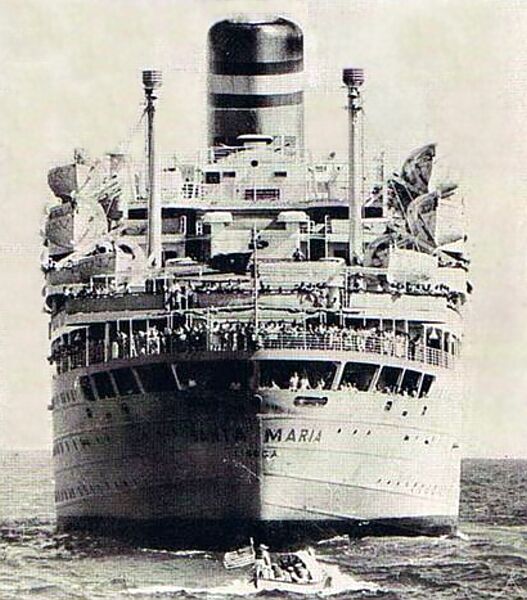
USS Gearings motor
launch approached the Santa Maria to speak with Captain Galvao
In order to solve the situation the Brazilian
government who for a long time had opposed Antonio Salazar in Portugal,
announced that should Henrique Galvao wish to enter Brazilian
waters, he and his men would be granted political asylum, which
is what then happened. Passengers and crew were landed at Recife,
Brazil and the liner was given back to her owners in Portugal.
Captain Henrique Galvao decided to surrender the ship without any
further mayhem.
Captain Henrique Galvao may have been a
colourful and in some ways an interesting person. In addition he
had been a brave Navy man, a politician, poet, playwright,
pamphleteer and a writer with a considerable amount of work
published mainly on African themes. For 20 years Galvao had
served as an Inspector General in the Portuguese colony of Angola,
in West Africa. In this official capacity Galvao had chronicled
abuses committed against the Africans by the Portuguese
Government, under the leadership of Premier Antonio Salazar.
Galva’s writings irritated Salazar and finally Galvao was
arrested for treason and jailed.
In jail, Henrique Galvao continued to write and
smuggle pamphlets out. This caused his jail sentence to be added
an extra 12 years. However, by feigning illness in jail, he was
admitted to a Lisbon hospital. Disguised as a medical doctor,
Henrique Galvao managed to walk away from this hospital and
disappear from Portugal. Later he turned up in South America,
first in Argentina, later in Venezuela joining other exiles in
the Portuguese Liberation Movement. But, in my book he was simply
evil, for there is no justification in terrorism and murder, no
matter what, thus he will always remain a terrorist and
responsible of murder and the wounding of a peaceful passenger
liner’s crew!
Santa Maria returns to Companhia Colonial De Navegacao:
The ship was returned to her owners in Recife
and she returned to Lisbon just with her crew. Having returned to
Lisbon, she had her lifeboat restored and the Santa Maria soon
returned to her regular services and continued a rather
uneventful life at sea!
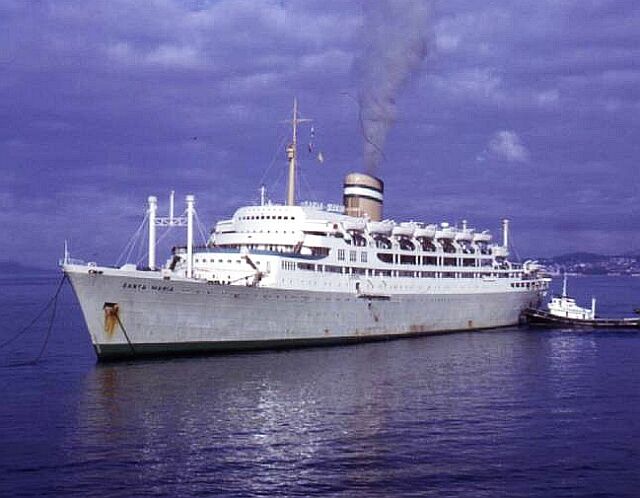
Santa
Maria seen in Vigo in 1966
Santa Maria’s Final Years:
The Santa Maria later resumed her
Florida-Caribbean sailings, but inevitably she grew older
and, like her sister and most passenger liners of her time became
less and less profitable, mostly due to the increased competition
with the arrival of the Jumbo Jet, the 747!
Santa Maria arrived at Lisbon in April
1973 suffering engine troubles. The company decided that major
repairs would have been impractical. With temporary repairs, she
departed a month later on a cargo only voyage to Luanda and Lourenco
Marques. She carried general cargo as well as a few dozen
cars, many of which were stowed on deck. Once she had arrived at
Lourenco Marques, she was given another duty to as she was to tow
two small company freighters to a scrap yard in Mauritius.
Thereafter, she herself sailed empty,
with a token crew to Taiwan, where she arrived
in Kaohsiung on July 19, 1973, was scrapped. It was
the end for Portugal’s beautiful TN Santa Maria, the ship I
though the prettiest of the two!
T.N. Vera Cruz.
The Vera Cruz story is far less remarkable
mostly due to the fact that she was not hijacked, and thus the Santa
Maria sort of stole the show from her. But it should not be
forgotten that she served her country well for a good number of
years.
In 1960 the Vera Cruz was placed on the Lisbon
to Angola service, but after the disturbances there the next year
she was used mostly as a troop transport ship. She continued to
sail and operate both as a passenger ship and a troop ship.
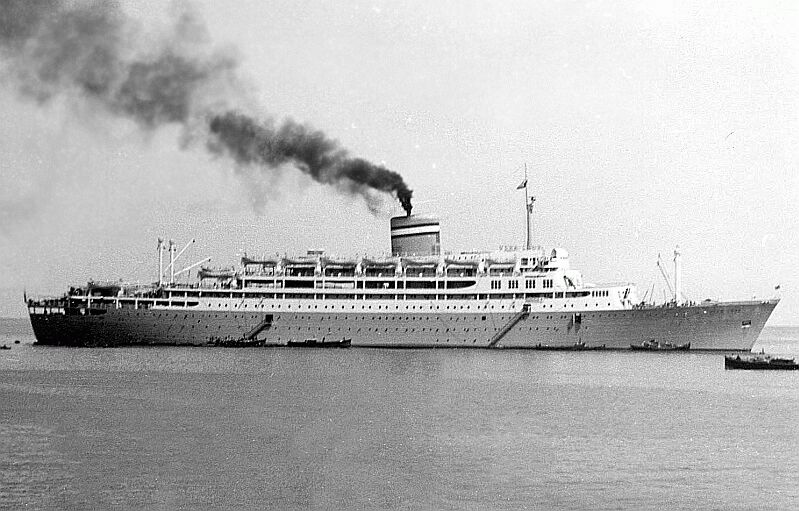
Vera
Cruz is seen here at anchor
As it will be noted from the two schedules
above that “Companhia Colonial De Navegacao” tended to
place the TN Santa Maria before of the TN Vera Cruz. This was
mostly due to her being considered the newer ship of the two but
also as the better looking ship with her superior forward
superstructure and pleasant interiors, etc. In addition, with the
Portuguese being very much a Roman Catholic nation, how could you
possibly place the name Santa Maria (Holy Mary) below Vera Cruz,
the name of a Mexican city?
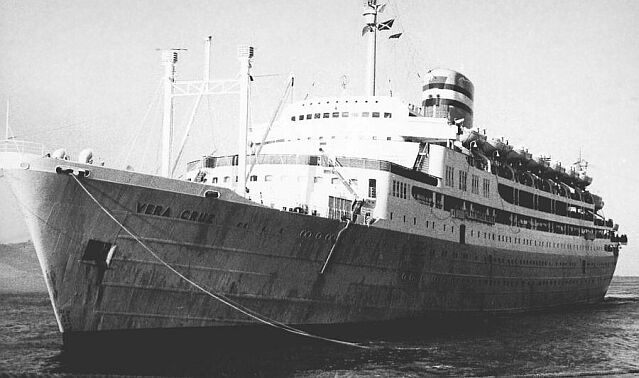
The Vera Cruz is
seen here on one of her last voyages
However this superb Portuguese liner, the Vera
Cruz continued sailing until times became uneconomical and she
was finally sold to the breakers in early 1973. She headed for Taiwan
and arrived in Kaohsiung on April 19, 1973 to be broken up.
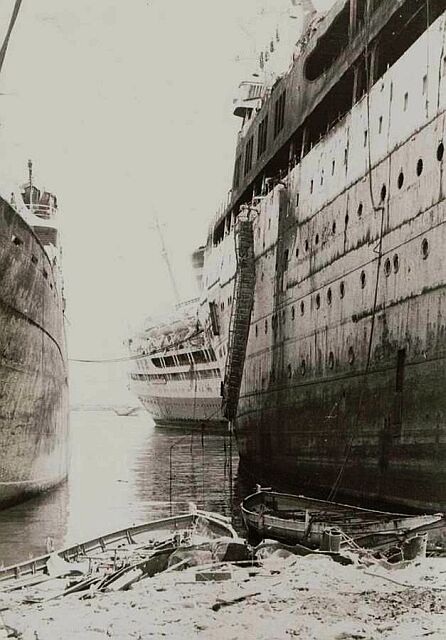
Here
we see both the Vera Cruz and the Santa Maria (both on the right)
at the Kaohsiung breakers in 1973
Let us always
remember sheer Maritime Beauty and this was Portuguese shipping
at its very best!
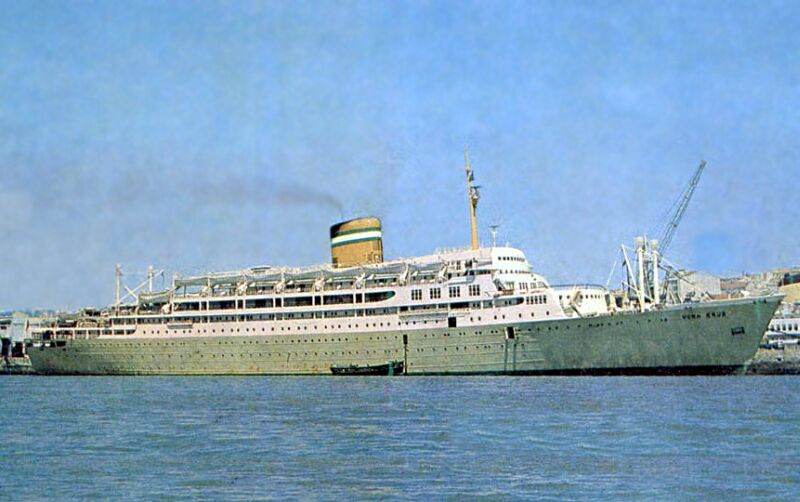
This is a fine
colour photograph of the Vera Cruz berthed in Lisbon – What
a wonderful way to remember these ships!
Also
read: TS Infante Dom Henrique & SS
Funchal
View
a wonderful presentation on YouTube
on these two fine ships
Use
the Back button on your browser or Close the Page to return to
the previous page
or go to the - SITE
INDEX
ssMaritime.com
& ssMaritime.net
Where
the ships of the past make history & the 1914 built MV Doulos
Story
Photographs
on ssmaritime and associate pages are by the author or from the
author’s private collection. In addition there are some
images that have been provided by Shipping Companies and private
photographers or collectors. Credit is given to all contributors.
However, there are some photographs provided to me without
details regarding the photographer/owner concerned. I hereby
invite if owners of these images would be so kind to make
them-selves known to me (my email address may be found on www.ssmaritime.com only),
in order that due credit may be given. I know what it is like, I
have seen a multitude of my own photographs on other sites, yet
these individuals either refuse to provide credit or remove them
when asked, knowing full well that there is no legal comeback
when it comes to the net. However, let us show these charlatans
up and do the right thing at all times and give credit where
credit is due!
This
notice covers all pages, although, and I have done my best to
ensure that all photographs are duly credited and that this
notice is displaced on each page, that is, when a page is
updated!
ssMaritime
and associate pages are owned and © Copyright by Reuben Goossens
- All Rights Reserved













 -------------
-------------









